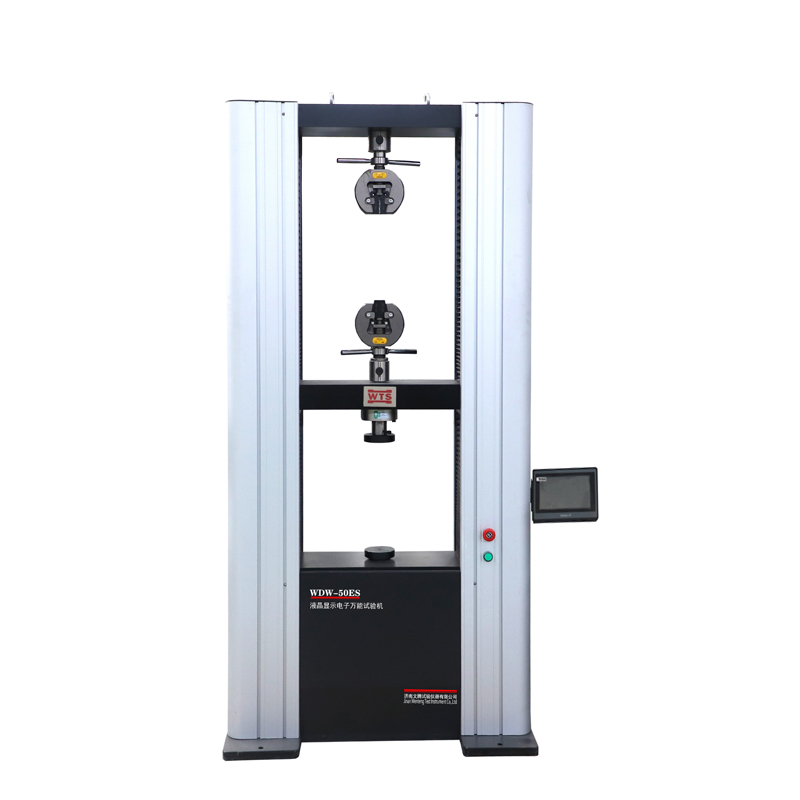In today’s rapidly advancing technological landscape, automation and precision play crucial roles in improving the efficiency and accuracy of processes across industries. One such technology making significant strides is the UTM machine (Unmanned Test Machine), a powerful tool used for a variety of testing, monitoring, and data collection tasks. UTM machines are revolutionizing how tests are conducted, providing an efficient, cost-effective, and reliable alternative to traditional manual testing methods. This article delves into the core functions of UTM machines, their diverse applications across multiple industries, and how to select the right UTM machine for your needs.

1. Understanding the Core Functionality of UTM Machines
1.1. Definition of UTM Machine
A UTM machine is a versatile, unmanned testing system designed to automate various types of testing, monitoring, and data collection processes. These machines can be programmed to perform highly repetitive tasks with minimal human intervention, allowing for precise measurements and the ability to operate 24/7, which would be impractical with human operators. The primary objective of UTM machines is to provide automated testing and system analysis that would otherwise require significant human labor and time.
UTM machines are typically used to simulate real-world conditions for products or systems. They are often seen in laboratories, research and development (R&D) departments, production lines, and quality assurance departments.
1.2. Functions of UTM Machines
Some of the core functions of UTM machines include:
Automated Testing: UTM machines are programmed to conduct a variety of tests on materials, components, or finished products, such as stress tests, tensile tests, and fatigue tests. The machine can automatically adjust parameters, control testing cycles, and capture data in real-time, allowing for higher efficiency and better precision.
Data Collection and Analysis: UTM machines continuously collect data during testing processes, which can be analyzed for trends, performance issues, or failures. The data can then be stored and exported for further analysis, improving the accuracy of reports and facilitating quicker decision-making.
Process Automation: In industries where repetitive tests or processes are required, UTM machines can completely automate the procedure. This includes automated calibration, loading/unloading of test materials, and managing testing sequences. This leads to a reduction in human error and more consistent results.
System Monitoring: UTM machines often come equipped with sensors and diagnostic tools that enable them to monitor environmental factors, system health, and performance. These systems can provide valuable insights into the condition of the equipment, allowing for predictive maintenance and minimizing downtime.
1.3. Types of UTM Machines
There are various types of UTM machines designed for different applications:
Mechanical Testing UTM Machines: These are used for testing the mechanical properties of materials, such as tensile strength, elongation, compression resistance, and hardness. These tests are crucial for industries like aerospace, automotive, and construction.
Environmental Testing UTM Machines: Used in extreme temperature, humidity, or vibration conditions, these machines simulate environmental factors that a product may encounter during its lifecycle. The purpose is to ensure that products can withstand harsh conditions.
Electrical and Electronic Testing UTM Machines: These machines test the electrical properties of products, including insulation resistance, dielectric strength, and continuity. They are commonly used in the electronics, electrical, and telecommunications sectors.
2. The Diverse Applications of UTM Machines Across Industries
2.1. Manufacturing and Quality Control
In manufacturing, UTM machines have transformed how product quality is ensured. Traditional manual testing methods can be slow and error-prone, especially when testing large volumes of products. UTM machines, on the other hand, are capable of performing high-precision tests quickly and efficiently. For instance, they are used in industries such as automotive, aerospace, and electronics to test components such as:
Engine parts for fatigue and tensile strength.
Circuit boards for electrical conductivity and failure thresholds.
Structural components for stress testing under load.
Moreover, UTM machines can automate the inspection process, removing human bias and improving the consistency of results. This leads to better quality control and more reliable products reaching the market.
2.2. Research and Development (R&D)
In research and development (R&D), UTM machines play a vital role in accelerating the testing phase of new products. When developing new materials or prototypes, companies need reliable testing equipment that can replicate a wide range of conditions to simulate how products will behave in the real world. Whether it’s testing the fatigue resistance of new materials or evaluating the impact of environmental factors on product performance, UTM machines provide R&D teams with valuable data that informs the design process.
For example, a material science lab might use a UTM machine to conduct fatigue tests on a new composite material, simulating repeated loading and unloading cycles to predict its lifespan. Similarly, in the pharmaceutical industry, UTM machines can test the integrity of packaging materials, ensuring that they meet the standards for storing sensitive medications.
2.3. Aerospace and Defense
In the aerospace and defense sectors, precision testing is paramount. UTM machines are used extensively in these industries to test everything from tensile strength of metals to vibration resistance of sensitive components. For instance, when testing aircraft wings, UTM machines simulate the high-stress conditions that these parts will face during flight. This ensures that critical components will maintain their integrity even under extreme conditions.
Additionally, the defense industry relies on UTM machines to test the reliability of weapon systems, safety devices, and military hardware. These tests are crucial in ensuring that the equipment can withstand harsh environments, such as high impact, temperature fluctuations, and long periods of use.
2.4. Automotive Industry
The automotive industry also benefits greatly from UTM machines, particularly when testing parts that must adhere to rigorous safety and performance standards. These machines are used to assess the strength, durability, and wear resistance of components such as tires, brake pads, and suspension systems. UTM machines help engineers simulate real-world driving conditions, allowing them to analyze how parts will perform over time, ensuring that vehicles remain safe and functional throughout their lifespan.
Additionally, UTM machines can be used for testing the materials used in car bodies, such as steel and composite materials, under different conditions to evaluate their crashworthiness, corrosion resistance, and overall strength.
3. Choosing the Right UTM Machine: Key Factors to Consider
3.1. Determining Your Testing Needs
Before investing in a UTM machine, it is essential to first determine the specific types of tests and applications for which the machine will be used. UTM machines are highly customizable, with various configurations and features available depending on the type of testing required. If your primary focus is testing the tensile strength of materials, you may need a machine designed specifically for that purpose. If environmental conditions like temperature or humidity play a significant role in your tests, look for a UTM machine with additional environmental control features.
3.2. Accuracy and Precision
The accuracy and precision of a UTM machine are essential for obtaining reliable test results. Depending on your industry, even minor variations in test results can lead to costly errors or failures. Therefore, it is vital to choose a UTM machine that meets the specific precision standards of your industry. Look for machines with high-resolution sensors and accurate control systems, as these will ensure that tests are conducted under precise conditions and that data can be trusted.
3.3. Automation and Integration Capabilities
One of the primary benefits of UTM machines is their ability to automate testing processes. If your testing process involves multiple steps or requires data collection from various sensors, it is important to choose a UTM machine that offers automation features. This will not only improve efficiency but also reduce the likelihood of human error. Additionally, ensure that the machine can integrate with your existing laboratory or production systems, allowing for seamless data transfer and analysis.
3.4. Cost and ROI
As with any industrial equipment, cost is always a consideration when choosing a UTM machine. While some machines may offer advanced features and capabilities, they may come at a higher price point. It is important to evaluate the total cost of ownership, including maintenance, consumables, and the potential for reduced labor costs due to automation. The return on investment (ROI) for a UTM machine will depend on how much it improves testing efficiency, reduces errors, and ultimately contributes to product quality.

Conclusion: The Future of UTM Machines
UTM machines are set to continue transforming industries by providing automated, precise, and efficient testing capabilities. As industries demand higher quality, faster turnaround times, and more reliable products, the role of UTM machines will only grow. By automating repetitive tasks and ensuring rigorous testing standards, UTM machines are not only improving product quality but also pushing forward innovation across multiple sectors. Whether you are in manufacturing, aerospace, automotive, or R&D, understanding how UTM machines function and how to leverage them for your specific needs will provide a significant competitive advantage in today’s technology-driven world.







